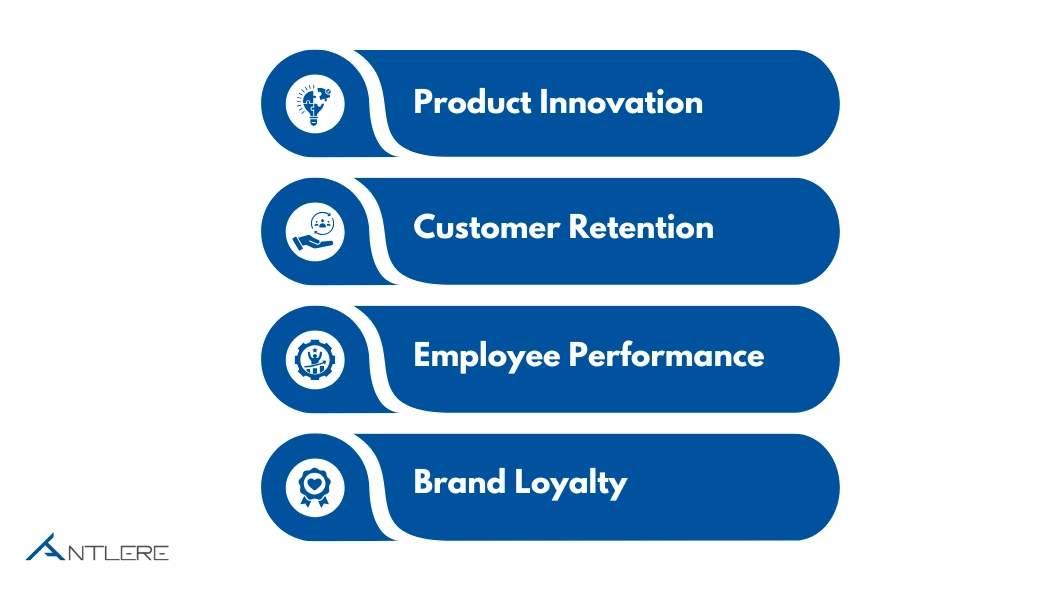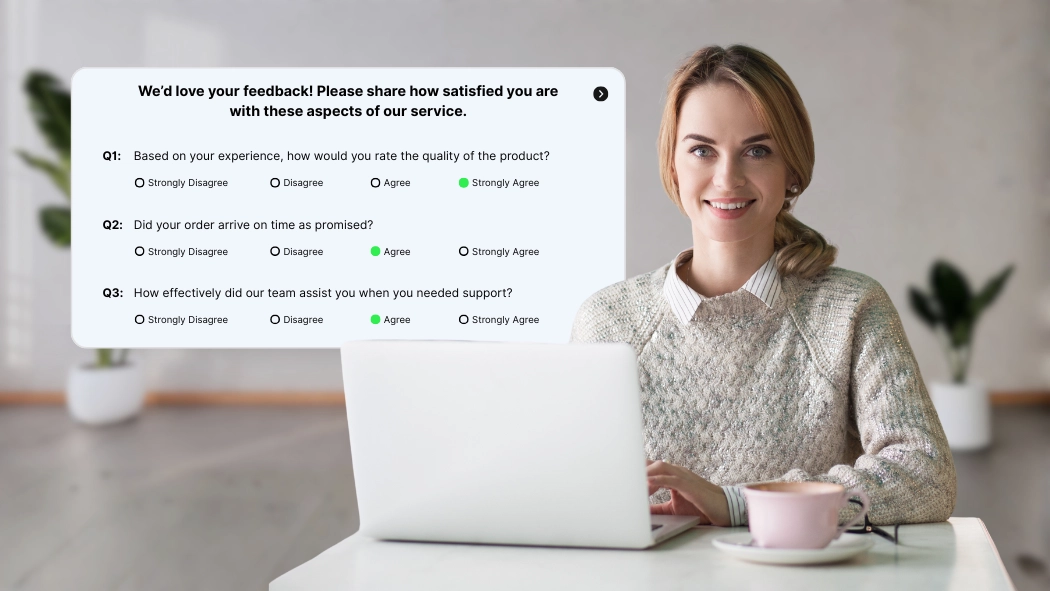

Using Customer Satisfaction Surveys to Improve Your Product or Service
So, imagine you launch a product that everyone thinks is perfect, but then your customers find otherwise. This, however, is a reality faced by many organizations. The solution? Customer satisfaction surveys. These surveys serve as that direct line to the customer standpoint, offering actionable information for businesses to shape their product, build rapport with customers and outperform competitors.
In a market where 86% of customers are willing to pay more for better customer experience (PwC, 2023), the traditional approach won’t cut it. Customer satisfaction surveys aren’t just about determining how well your team is doing, they become a tool for innovation and growth.
What Are Customer Satisfaction Surveys?
A customer satisfaction survey is a structured questionnaire used to determine how satisfied or dissatisfied a customer feels about a product, service or brand. These questionnaires may involve measurements such as Customer Satisfaction Score (CSAT), Net Promoter Score (NPS) and Customer Effort Score (CES).
That’s because customer satisfaction surveys reveal actionable trends, not general feedback. They assist companies in understanding the things they do right and the things that need improvement most urgently.
The Role of Customer Satisfaction Surveys in Business Growth
Customer satisfaction surveys are more than the voice of the customer collection tool. They’re a strategic piece in the business results puzzle:
Product Innovation: Identify customer needs that are not being met and improve product functionality.
Customer Retention: Identify dissatisfaction early and intervene prior to the loss of customer.
Employee Performance: Identify where your customer facing employees could use further training.
Brand Loyalty: The higher the satisfaction, the fiercer long-term loyalty.
In a Gartner study (2024), companies that used survey feedback in their decision-making increased customer retention by over 27% versus those that didn’t.

Key Metrics to Measure in Customer Satisfaction Surveys
All surveys are not created equally. For these reasons, organizations commonly use the following standard metrics to guarantee actionable insights:
Metric | Definition | Why It Matters |
CSAT (Customer Satisfaction Score) | It gauges short-term satisfaction of a product or service | Helps evaluate immediate experiences |
NPS (Net Promoter Score) | Calculates loyalty based on how likely customers are to recommend | Strong predictor of long-term growth |
CES (Customer Effort Score) | How easy it is for customers to resolve problems | Lower effort leads to higher retention |
Combining these metrics provides a full circle 360 view of the customer experience.
Examples: How Companies Use Customer Satisfaction Surveys
Successful companies in any industry leverage customer satisfaction surveys to enhance their offering:
Retail: Surveys are used by stores to evaluate their checkout experience and product satisfaction.
SaaS (Software as a Service): Platforms like Slack leverage in app surveys to rate how their features are, well, useful.
Hospitality: Hotels collect guest feedback post stay to improve services such as housekeeping or amenities.
The examples above demonstrate how surveys can turn into real improvements that, in turn, will have a significant impact on customer loyalty.
Benefits of Customer Satisfaction Surveys
There are many strategic advantages to using customer satisfaction surveys. Here’s why they are indispensable:
Spotting Weaknesses: Businesses find service weaknesses that would otherwise likely go undiscovered.
Product Enhancement: Surveys tell what product features customers care about the most.
Competitive Edge: Businesses that survey have access to additional information competitors might not have.
Customer Engagement – Seeking an opinion makes customers feel valued, keeping the brand relationship intact.
Common Challenges in Conducting Customer Satisfaction Surveys
Surveys are helpful, but they have limitations for sure:
Low Survey Response Rate: Most customers don’t fill up the surveys unless there is a reward/Promotion in place.
Survey Fatigue: Ask too many questions and patients will get bored.
Response Bias: Respondents will give excessively favorable or unfavorable feedback, skewing findings.
These challenges need to be resolved using simple, focused, and customer friendly surveys.
Best Practices for Designing Customer Satisfaction Surveys
To ensure accuracy and engagement, companies should do the following:
Keep surveys short (5–10 questions).
A combination of closed-ended questions and open-ended questions is most effective.
Customize surveys with brand colors to establish trust and credibility.
Time surveys wisely (e.g., post-purchase, service interaction or completion).
Process data fast and act upon insights to show that you are proactive.
These methods help surveys go beyond just collecting data, but prompting participation as well.
Case Study: Survey-Driven Product Improvement
A mid-market SaaS firm released new functionality for working on projects together. Initial adoption was low. In a customer satisfaction survey, they found that the interface was not intuitive. When a feature was re-designed based on feedback from the survey, customer adoption rate had increased 42% in 3 months.
This scenario demonstrates how small changes, based on survey responses, can dramatically improve the customer journey and revenue.
Statistics That Prove the Value of Customer Satisfaction Surveys
The significance of satisfaction surveys is not in question as research supports this:
70% of customer buying experiences are based on how the customers feel they are being treated (McKinsey, 2023).
Businesses that leverage customer feedback properly experience a 10–14% improvement in their revenue (Forrester, 2024).
The leaders in NPS are growing at more than two times their competitors (Bain & Company, 2023).
These numbers demonstrate that surveys are not just feedback tools — they are growth levers.
How to Use Customer Satisfaction Surveys for Continuous Improvement
Conducting surveys is only the first step. Businesses must turn insights into action:
Gather Feedback Regularly: Instead of waiting until annual reviews, build in surveying along the customer journey.
Patterns Analysis Try to notice a pattern, same problem or issue!!
Close the Loop: Share what actions have been taken in response to customer feedback.
Combine with Other Data: Tie survey results to analytics for a complete picture.
When surveys are integrated into a culture of continuous improvement, it makes sure that customer satisfaction will continue to be the key driver for success.

Conclusion: Turning Feedback into Action
More than a survey let’s call it the lifeline of product and service improvement. Listening more closely to customers through better social strategies will allow businesses to react quicker, provide better experiences and create the kind of loyalty that leads to enduring growth.
Organizations that recognize the role of surveys as a strategic tool rather than an afterthought are proving to be the victors in today’s customer-first economy. Whether you’re following up on product feature requests, improving customer support or measuring customer loyalty, customer satisfaction surveys can give you the right tools to provide accurately targeted direction.



